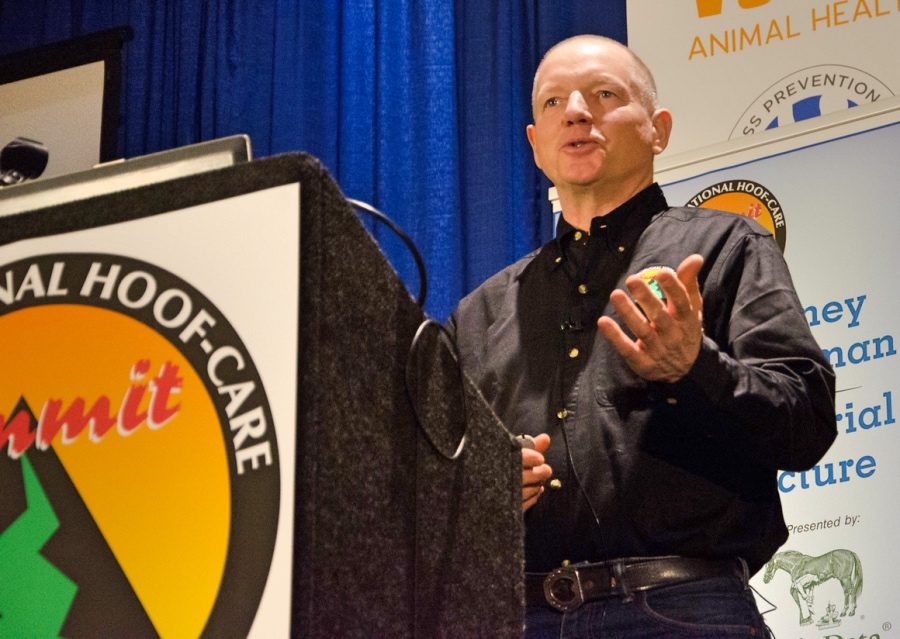After more than 4 decades as a farrier, Michael Wildenstein has a lengthy and impressive hoof-care résumé, yet a career in farriery wasn’t a foregone conclusion.
Wildenstein grew up around horses and he learned shoeing and trimming techniques from his grandfather. As his love for horses grew, his interest in farriery and shoeing techniques grew. But the young Wildenstein attended school to become a biology teacher and earned a teaching degree in education. Try as he might though, Wildenstein couldn’t shake his fascination with hoof care and the intricacies of the shoeing profession.
When he finally decided to make farriery a career, Wildenstein attended Rocky Iron’s Horseshoeing School in Terreaux, Nova Scotia. From there, he began working at Cornell University and maintained a regular practice specializing in heavy horses. In 1986, he began a 5-year stint living in Europe where he took courses at the Royal Veterinary School in Denmark and worked for veterinarians working on mostly warm- blooded horses.
In 1991, Wildenstein and his wife Gry, who is a veterinarian, moved back to the United States when he was offered a position as Cornell University’s resident farrier, a position he held for nearly 2 decades. Along the way, Wildenstein became one of just four farriers in the world — and the only American — to earn honors in passing the test that made him a Fellow in the Worshipful Company of Farriers.
As the 19th annual International Hoof-Care Summit approaches Jan. 25-28, 2022, in Cincinnati, Ohio, Wildenstein shares his thoughts about the event and footcare education.
Q: What about the International Hoof-Care Summit are you personally looking forward to most?
WILDENSTEIN: The first class attendance to the Summit is a great opportunity to meet and ask questions of the most knowledgeable persons associated with hoof care. I will take advantage of breaks and meal times to get to know more of these people. Every lecture is a learning opportunity and I will get to as many as I can. And the luxury of having so many vendors under one roof at the Trade Show is spectacular. Being able to handle, look at, and ask questions about hoof-care products is invaluable.
Q: A key reason that many footcare professionals attend education events is to meet and network with others in the industry. How important do you think educational events like the International Hoof-Care Summit is for meeting and networking with other hoof-care professionals?
WILDENSTEIN: The International Hoof-Care Summit is attended by knowledgeable persons from around the world. This event is the best opportunity that we have to acquaint ourselves to others who share the passion to improve the lives of horses.
Q: Why do you think it’s important that footcare professionals make time in their schedule to seek out continuing education at events like the International Hoof-Care Summit?
WILDENSTEIN: By attending continuing education events I continue to be stimulated to improve and learn more. My goal is to leave a horse better off than when I arrived. As more is learned, this goal is accomplished with greater understanding and efficiency.
Q: What would be your advice to somebody who is considering going to the Summit but hasn’t made up their mind yet?
WILDENSTEIN: By attending the International Hoof-Care Summit you will be rewarded many times over as your understanding, knowledge, and list of friends in the hoof care business increases. Invest in your future by being progressive and knowledgeable in all that you do!
Learn More
Are You Considering More Than Feet When You Trim and Shoe?: Understanding deviations will guide you in helping the horse, Hall Of Fame farrier tells Summit attendees.
Equine Body Conformation Should Inform Your Approach to Farriery: Rotational, flexural and angular deviations result in hoof-care needs that are unique from horse to horse and hoof to hoof.
Understand Drafts' Farriery Needs Before Picking Up the Foot: Tips and advice to make trimming and shoeing easier for you and the horse.








Post a comment
Report Abusive Comment